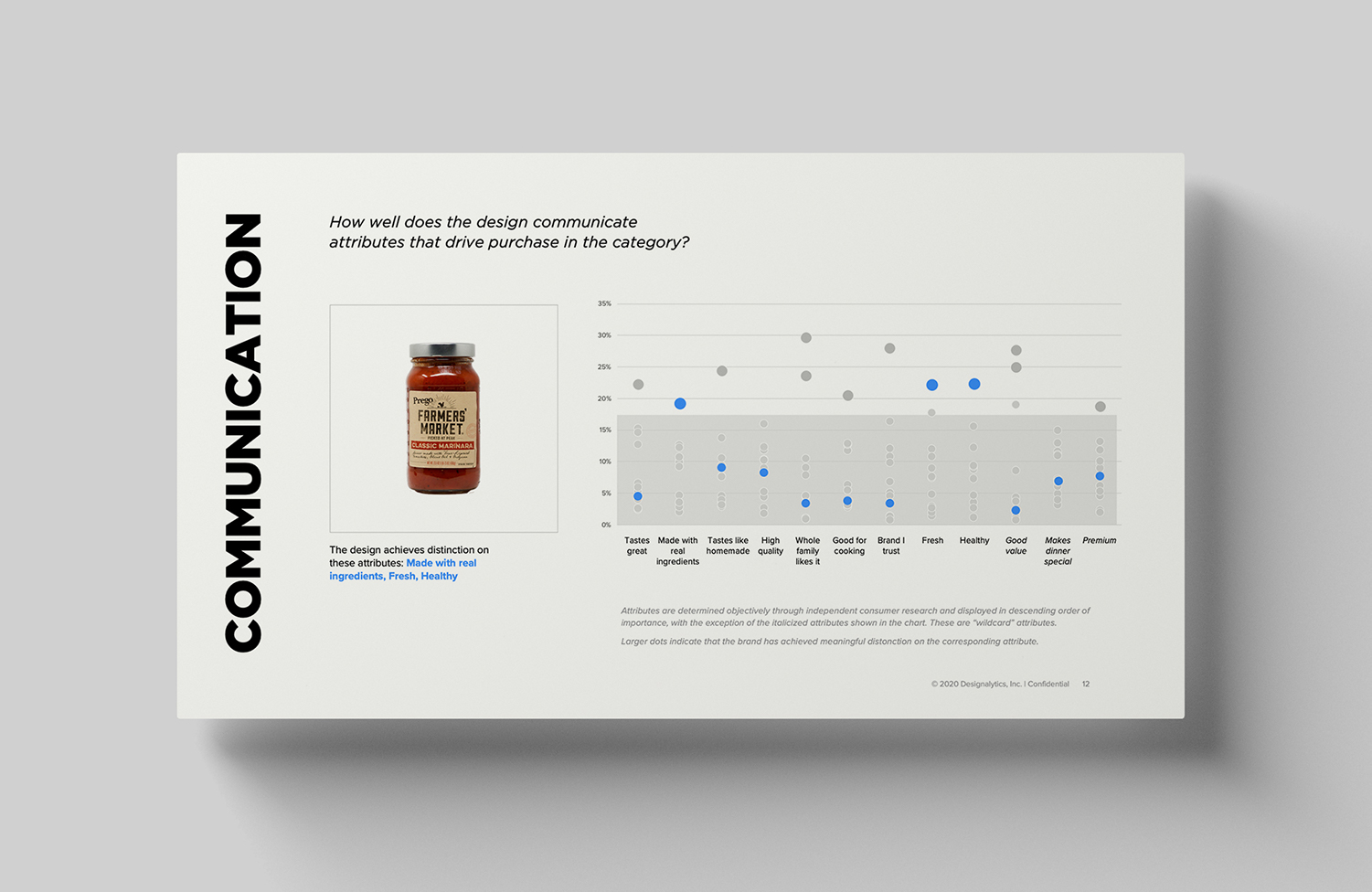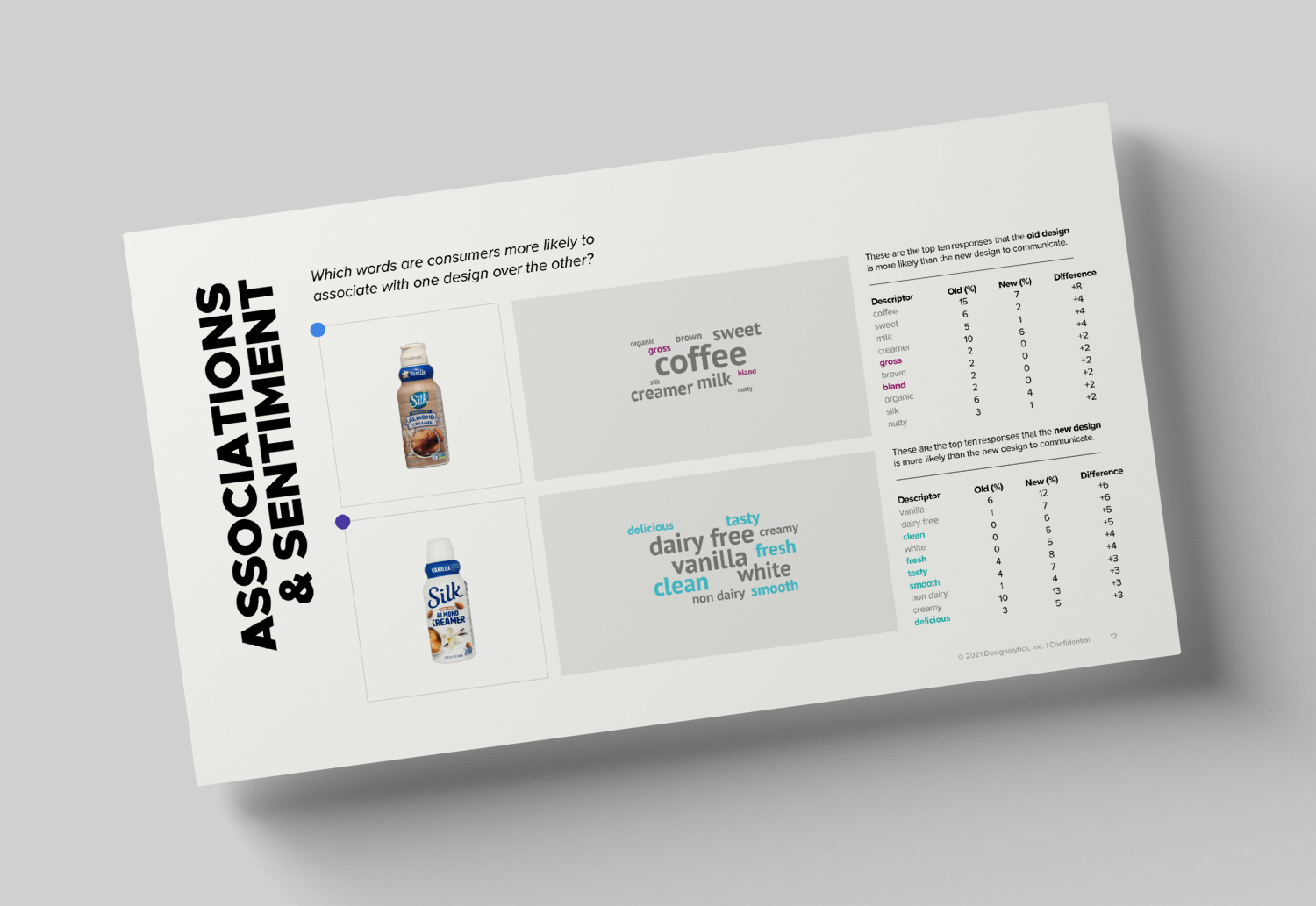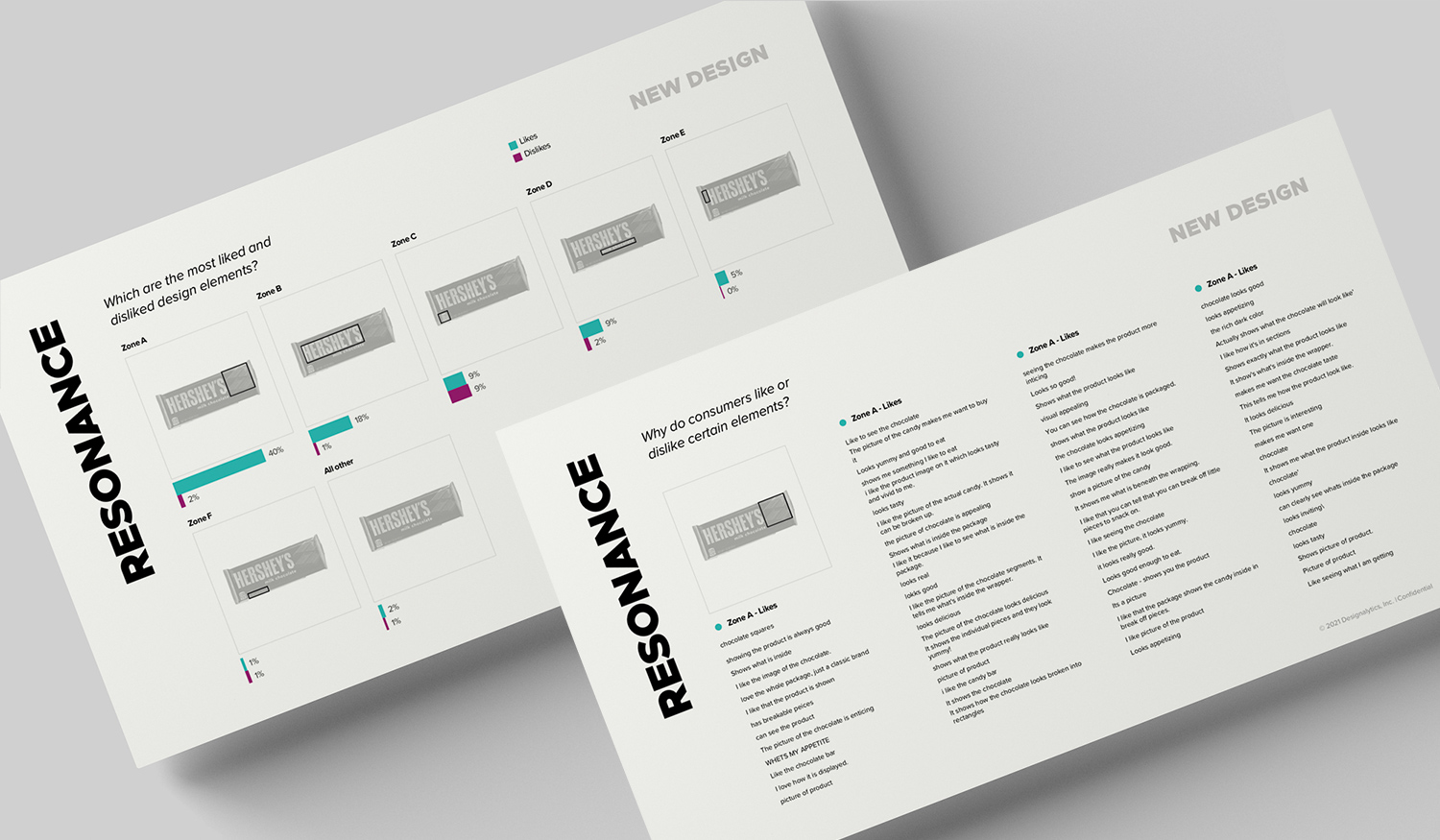As anyone who has undertaken a collective creative pursuit can tell you, nothing is perfect on the first try. Often it takes many attempts—and a lot of discussion, dissection, and diligence—before you arrive at a result you’re all proud of. As the author and design thinker John Spencer put it, “Creativity is more about iteration than inspiration.”
This is certainly true with packaging, whether you’re creating a new design or improving your current one. The question becomes: How should you iterate? What will improve your design? How can you take it from a good design to a great one?
As a brand, those are questions you might ask of your creative team or agency. But the answer, of course, is driven by consumers. So in order to create the best design possible, creatives need something from brands.
Actionable insights.
Traditional design research is generally content with either-or, yes-or-no answers that offer no clues at further improvement. They will tell you which design performs best with consumers (albeit, with subpar results), but not why—and perhaps just as importantly, which parts of the design are working and which aren’t.
This doesn’t give creatives much to work with; They’re generally at a loss for where to focus their refinement efforts. And this is why Designalytics has created an entirely new system for design-driven brand growth—providing deep diagnostics, both quantitative and qualitative, to help you target opportunities for improvement.
Here are four key areas where design performance data can support creatives in taking your design to the next level.
Design diagnostics on each element of a design
Design is a holistic discipline, but it’s important to understand when certain parts of a particular design aren’t contributing. What was intended by the creative team, in other words, may not be what’s perceived at first.
For example: If consumers are consistently noting that an important piece of copy is illegible, a raisin looks like an ant, or a mascot is not making the expected impression, that’s very good feedback for a creative team to have. Once these issues have been diagnosed, they’re armed with the information to address them.
Getting rich qualitative and quantitative feedback on each element of the design helps designers to tweak the execution of the package elements that need the attention, versus wasting time on (or worse, unnecessarily modifying) the elements that don’t.
Communication of decision-driving attributes
Through our exhaustive empirical validation of package redesigns, we’ve found that effectively communicating important product attributes on your package contributes heavily to sales performance, with a nearly 90% correlation to directional in-market outcomes.
In other words, if you don’t communicate well, your new design is already at a tremendous disadvantage. By providing creatives with the data that shows where your communication can be improved (and where you might be doing better than competitors), you’ll set them—and your brand—up for success.

Consumer associations and sentiment
Objective data should be the bedrock upon which a design is built, but sometimes off-the-cuff statements made by consumers can offer keen insights.
That’s why Designalytics captures spontaneous associations, asking consumers to share the first words that come to mind when they view a design. It allows brands to access instinctual and emotional “system 1” thinking (popularized by Daniel Kahneman’s groundbreaking book on human psychology, Thinking Fast and Slow.)
On its own, this information may be of limited utility. Combined with robust data, though, it can paint a more complete picture for creatives on how consumers are reacting to a design… and how it can improve.

The "why" behind consumer preference
It sounds obvious, but when searching for the answer to “why?,” it’s helpful to actually ask that question. Yet so many design research firms don’t: They fail to ask for or provide such complementary, qualitative feedback in addition to data.
At Designalytics, we not only measure the purchase preference of consumers, we ask them to provide open-ended feedback about why they'd be more likely to purchase one design over another. Such information can be invaluable for creatives as they work to refine the design.
Like all good teams, creatives will do their best with what they have. The more information you give them—actionable information, beyond just stakeholder opinion or conjecture—the better design results you can expect.





